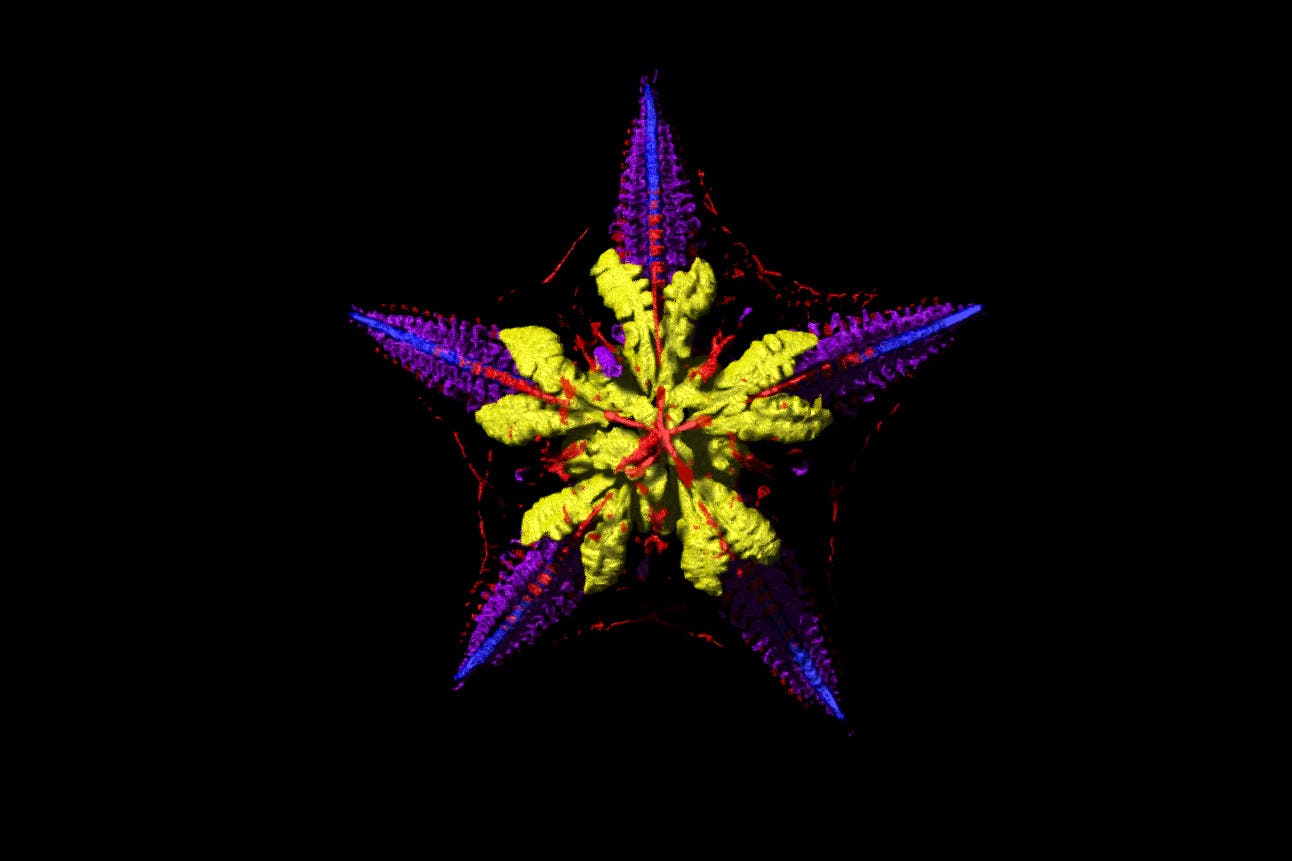Starfish bodies may more closely resemble a head, study suggests
The new research helps to answer the mystery of how these creatures evolved their distinctive body shape.

Your support helps us to tell the story
From reproductive rights to climate change to Big Tech, The Independent is on the ground when the story is developing. Whether it's investigating the financials of Elon Musk's pro-Trump PAC or producing our latest documentary, 'The A Word', which shines a light on the American women fighting for reproductive rights, we know how important it is to parse out the facts from the messaging.
At such a critical moment in US history, we need reporters on the ground. Your donation allows us to keep sending journalists to speak to both sides of the story.
The Independent is trusted by Americans across the entire political spectrum. And unlike many other quality news outlets, we choose not to lock Americans out of our reporting and analysis with paywalls. We believe quality journalism should be available to everyone, paid for by those who can afford it.
Your support makes all the difference.The entire body of a starfish may actually more closely resemble a head, scientists suggest.
The new research helps to answer the mystery of how these creatures evolved their distinctive star-shaped body, which has long puzzled scientists.
Echinoderms are a group of animals that includes starfish (or sea stars), sea urchins, and sand dollars.
Their body parts are arranged in five equal sections, in a unique fivefold symmetric body plan.
How the different body parts of the echinoderms relate to those we see in other animal groups has been a mystery to scientists for as long as we’ve been studying them
This differs from their bilateral ancestors, which have a left- and right-hand side that mirror one another, as in humans and many other animals.
According to the findings, the researchers detected gene signatures associated with head development just about everywhere in young sea stars, but expression of genes that code for an animal’s torso and tail sections were largely missing.
Dr Jeff Thompson, a co-author on the study from the University of Southampton, said: “How the different body parts of the echinoderms relate to those we see in other animal groups has been a mystery to scientists for as long as we’ve been studying them.
“In their bilateral relatives, the body is divided into a head, trunk, and tail.
“But just looking at a starfish, it’s impossible to see how these sections relate to the bodies of bilateral animals.”
In the new study, led by Laurent Formery and Professor Chris Lowe at Stanford University, scientists compared biological data from a sea star to other deuterostomes – a wider animal group that includes echinoderms and bilateral animals, like vertebrates.
As someone who has studied them for the last ten years, these findings have radically changed how I think about this group of animals
They have a common ancestor, so by comparing their development, scientists could learn more about how the bodies of echinoderms evolved.
Dr Thompson explains: “When we compared the expression of genes in a starfish to other groups of animals, like vertebrates, it appeared that a crucial part of the body plan was missing.
“The genes that are typically involved in the patterning of the trunk of the animal weren’t expressed in the ectoderm.
“It seems the whole echinoderm body plan is roughly equivalent to the head in other groups of animals.”
Researchers say this suggests sea stars and other echinoderms may have evolved their five-section body plan by losing the trunk region (torso) of their bilateral ancestors.
This would have allowed them to move and feed differently than bilaterally symmetrical animals.
Dr Thompson said: “Our research tells us the echinoderm body plan evolved in a more complex way than previously thought and there is still much to learn about these intriguing creatures.
“As someone who has studied them for the last ten years, these findings have radically changed how I think about this group of animals.”
The findings are published in Nature.